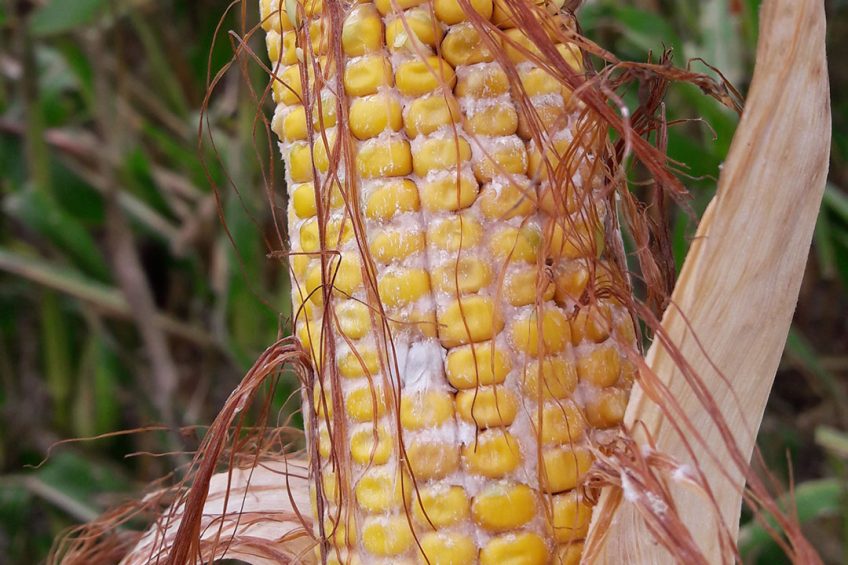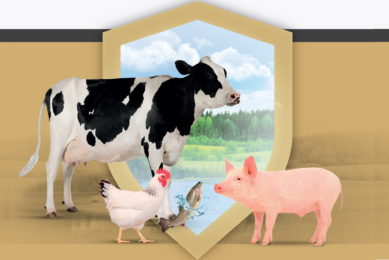The economic impact of mycotoxins

Mycotoxins are a significant problem worldwide causing notable direct or indirect economic losses in most countries. What measures can be taken to minimise these losses?
It has been estimated that about 25-50% of the world’s food crops are affected by mycotoxins. The most economically important mycotoxins are aflatoxins, deoxynivalenol (DON) and zearalenone (ZEN). For growers, direct economic losses are related to reduced crop yields, and for livestock producers, reduced animal performance and increased losses due to disease. Reduced yields and decreased animal performance may be so widespread and undetectable in many instances. This is especially true when the level of infection and/or contamination is low. Disease symptoms are more apparent and losses can be catastrophic in individual cases. Indirect economic effects of mycotoxins are more difficult to quantify and probably as important as the direct effects.
Counting the cost of crop losses
Worldwide, substantial quantities of food grains are affected by mycotoxins each year. This includes 16 million tonnes of maize, 12 million tonnes of rice, 1.8 million tonnes of groundnuts, 378,000 tonnes of sorghum and millet, 3.7 million tonnes of copra and 2.3 million tonnes of soybeans. Estimates from sample data from the Food and Drug Administration (FDA) show that crop losses from mycotoxins (aflatoxin, fumonisin and DON) in maize, wheat and peanuts in the United States (US) average $ 932 million annually. Additionally, annual losses averaging $ 466 million were incurred by the US in efforts to prevent or reduce mycotoxin contamination (CAST, 2003). The study estimated livestock losses due to mycotoxins to be about $ 6 million. In 2003, world agriculture trade was valued at greater than $ 500 billion with 33% of this amount coming from developing countries including countries in Latin America and the Caribbean (FAO, 2006). In Brazil, private feed companies have undertaken measures to control levels of mycotoxins in animal feed since these toxins reduce the efficiency of livestock production. The cost of mycotoxin analyses is estimated to be about $ 55,900 in capital investment and between $ 0.02–$ 0.06 per tonne of feed per month. Brazil produced 35.3 million tonnes of maize in 2001-2002 of which 65% was used for animal feed.
Impact of rapid mycotoxin analyses
Paul Sundberg of the National Pork Board stated that swine producers do not recognise on-going losses from aflatoxin, although they may occur in localised production areas in severely affected crop years. Only a very small number of cases of aflatoxin toxicity in swine are reported in the US due to the existing food safety regulatory systems. The poultry industry now relies upon sampling of corn by feed mills, to keep the contamination within the levels stated by the FDA guidelines. The sampling is often part of the same integrated production and marketing operation. The rate of sampling by the feed mills varies greatly and is dependent on industry reports of the occurrence of aflatoxins in corn from specific locations in that year. For example, when corn industry reports aflatoxin contamination in specific states or when positive samples are found during routine sampling, the rate of sampling by the poultry industry is greatly increased in those areas. A large integrated turkey producer reported conducting 2,200 non-ELISA assays for aflatoxins, costing approximately $ 2.67 per test and 4,200 tests were also carried out for fumonisins, DON and ZEN using ELISA test kits at $ 7 per test. These tests were conducted in the company’s laboratory which serves the feed mill and production facilities. The huge number of tests conducted were to assure the safety of approximately 400,000 tonnes of corn and were skewed to test a greater proportion of the locally bought southeast corn, than ‘corn belt’ corn.
Mycotoxin management strategies
The best practical way to control mycotoxin levels is to use rapid test kit systems for the analysis of mycotoxins in raw ingredients which are not yet in silos. Different rapid test kit systems are validated for different mycotoxins and commodities offering a very quick and effective way of raw material screening before they enter the feed mill. Once the levels are known, every feed mill can estimate the quality of its raw ingredients in terms of mycotoxin contamination and can effectively and more precisely (by dosage adjustment) apply feed additives during feed production.
Another strategy of mycotoxin risk management is to test for the presence of mycotoxins in finished feeds. This method has some advantages and disadvantages. Since each raw ingredient can bring its own mycotoxins into the finished feed, the most important advantage is that the presence of raw ingredients with a low inclusion rate (5-10%) which can still cause significant contamination of the finished feed but can be inadvertently overlooked if not tested, can be identified by testing the finished feed. The most important disadvantage is that analysis of finished feed takes quite a long time. So much so that the tested feed is likely to have been fed to the animals by the time the results from the analysis are known.
Storage mycotoxin contamination (ochratoxins, aflatoxins) can be prevented by keeping temperature and moisture content in silos low whilst aerating the grain regularly. In cases where perfect storage conditions cannot be guaranteed, the use of mould inhibitors is highly recommended. To mitigate the negative economic impact of mycotoxins on animal health, the application of specific feed additives (mycotoxin deactivators) is highly recommended. The Adisseo web application – Mycoman, informs the user about mycotoxin challenges and based on the challenge levels, calculates the necessary and effective dosage of the Adisseo mycotoxin deactivators product line. Mycoman is currently available for free online from Android Play Store (Google) and iOS (App store).
Author: Radka Borutova, Adisseo, France
References available on request






